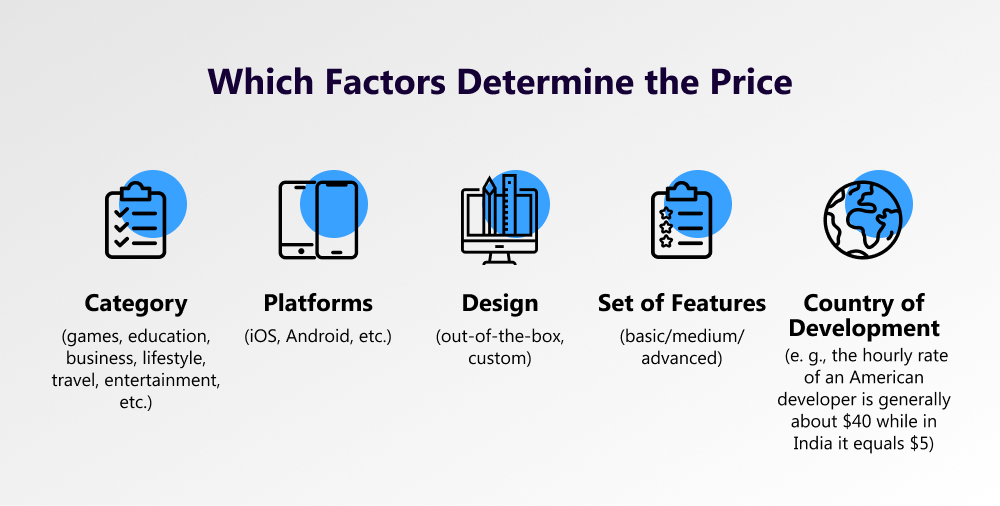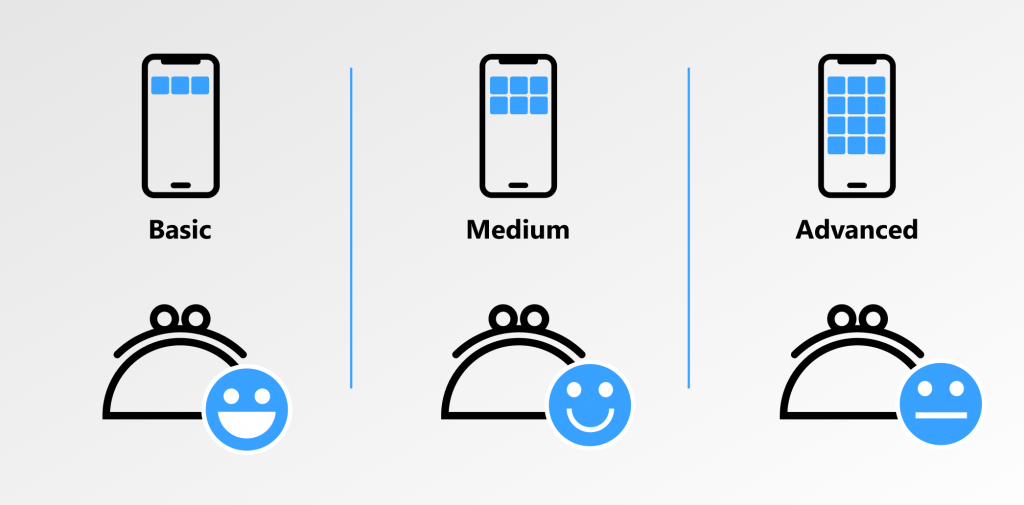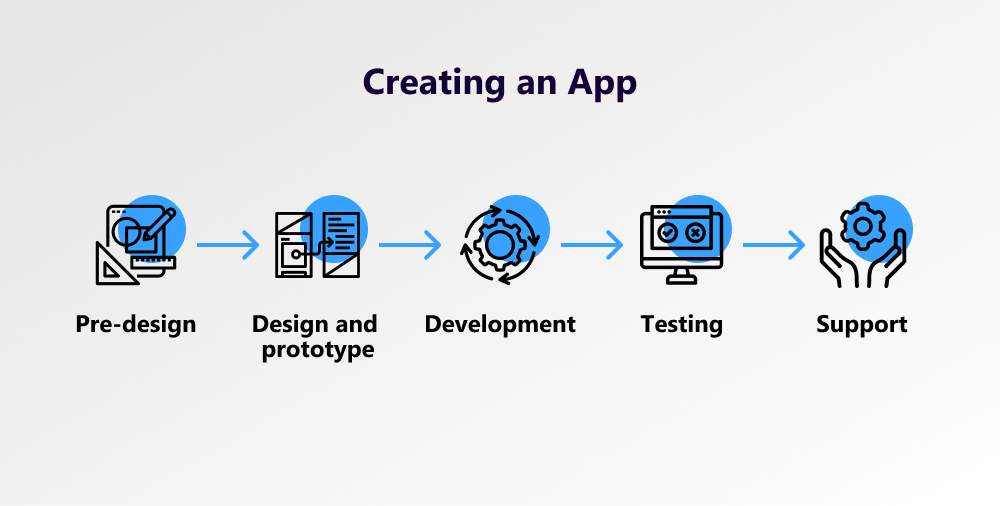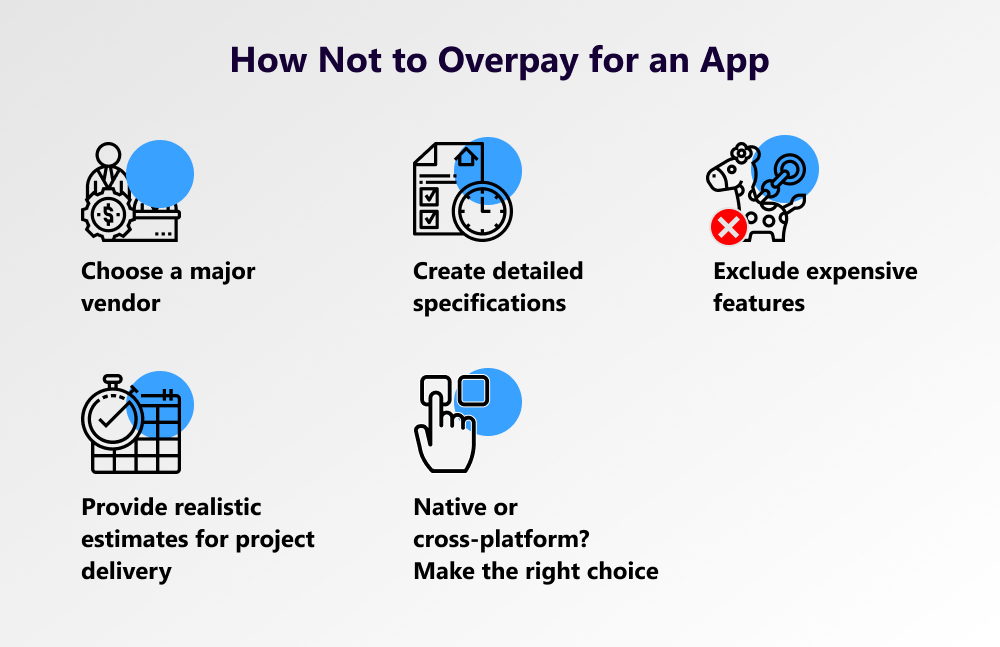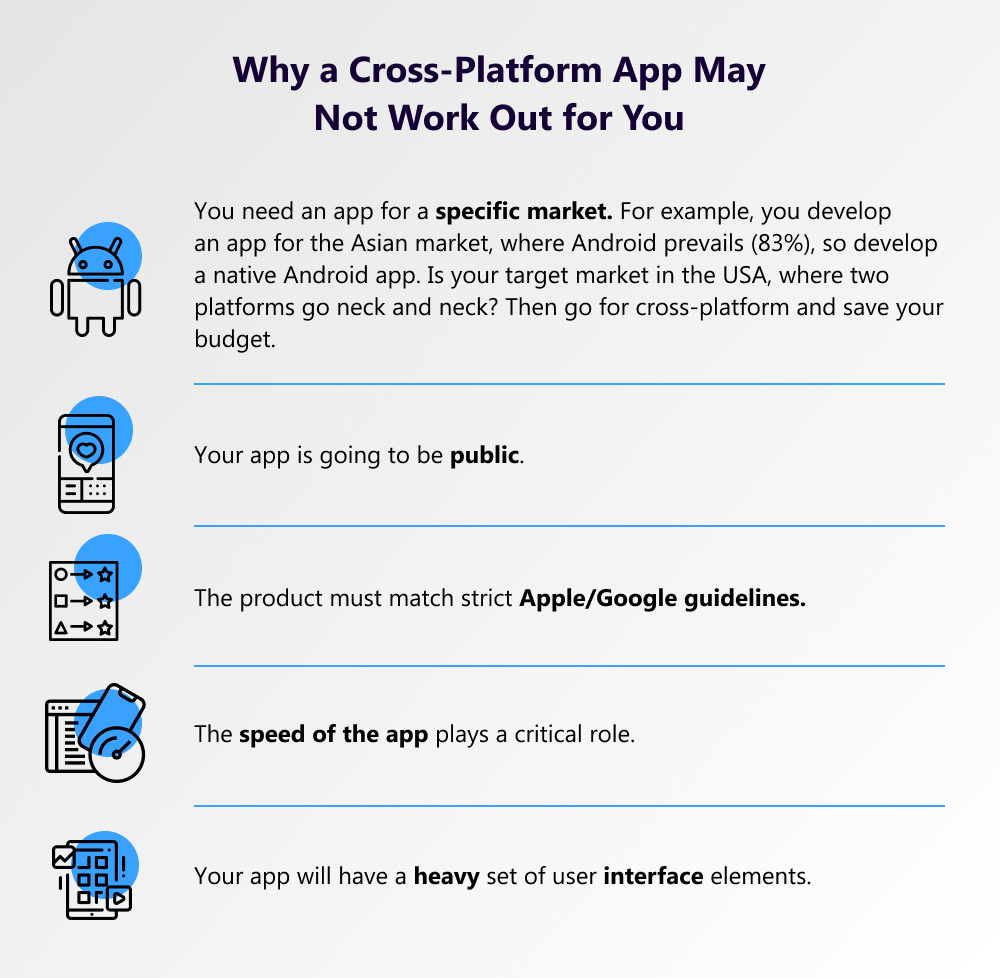The app economy is definitely flourishing, and in such circumstances, launching a mobile app for your business seems to be a nice plan. In this article, we will study the app development lifecycle, and consider the points that the customer needs to take into account for cost-effective mobile app development. What can you do at every project stage to save your money? See below for the details.

written by:
Anastasia Borodinets
The app economy is definitely flourishing, and in such circumstances, launching a mobile app for your business seems to be a nice plan. In this article, we will study the app development lifecycle, and consider the points that the customer needs to take into account for cost-effective mobile app development. What can you do at every project stage to save your money? See below for the details.
The mobile app market continues its dynamic evolution. According to the App Annie analytics platform, in 2020, apps will bring $30+ bln to software developers, and in 2021, mobile app store revenues will exceed $139 bln.
However, despite the obvious benefits that the mobile development industry brings for various businesses (e-commerce, e-learning platforms, entertainment, booking, etc.), the cost of mobile app development often becomes a major setback for many companies.
How much does it cost to develop an app?
Multiple factors impact the cost of creating a mobile application. Below are some major factors that determine the price.
According to the Clutch survey, a median price to build a mobile app is $171,450. At the same time, the mobile app development cost estimate may go as high as $500,000 or even more.
However, don’t be scared of the average cost of developing a mobile app. The cost for basic apps ranges between $10,000 and $50,000, so any type of business has a chance to build a nice software product.
How does the process of creating an app look like?
The process of building a mobile app includes five steps.
Pre-Design
Smart analytics allows you to assess the state of things in the market and uniqueness of your app and thus understand whether users really need it. Additionally, at this stage, you should decide on the app platform (iOS, Android, cross-platform, etc.).
Design and prototype
During the design and prototyping stage, the UI (user interface) and UX (user experience) design of an app are elaborated. The UI/UX designer creates a prototype interface to determine the correct navigation, logic, and approximate functionality of the application. At this stage, you get a sense of how the app will really look and feel.
Development
Here comes code writing which brings life to your product. Keep patient, it can take long enough if you have preferred native development. Otherwise, if you need quick results, try cross-platform development.
Testing
Testing is a crucial stage of project delivery although it is regularly skipped. At this point, decisions are made to change or improve the app functionality or leave it as it is. Mind that the cost of errors increases with every following stage, so bugs and errors found at the testing stage will be costly to fix.
Support
After the release, the app requires no less attention than during the development phase. The developers fix the errors that were overseen or not obvious before but hit the eye in the production environment.
Delivering each of the above stages requires skills and abilities of multiple talents — business analysts, UI/UX designers, architects, developers, testers, project managers. Thus, it becomes clear why the average cost of developing even a medium-sized mobile app, which takes up to 4–6 months to accomplish, will be significant.
I need an app. Is it possible to cut down expenses?
So, you’ve got an idea, analyzed the market, and become pretty sure that this app will propel your business to a new level.
Now it's time for a few tips that may help you in creating an impressive solution without overpaying.
1. Choose a major vendor
Of course, one may find great experts even in a small noname studio. However, please mind that while trying to cut your costs you cut your chances to get a real hit of an app, too. Actually, low-cost mobile app development may imply hidden costs or poor quality. Afterward, you get a raw product incapable of driving your company growth.
As a result, you are forced to search for a new developer and, accordingly, re-pay for the crappy work.
The mobile app development cost incurred by contracting a major developer who holds leading positions in the corresponding ratings may seem too high at first glance. However, if you choose a trusted company, you will pay for guaranteed technical excellence: well-thought-out functional architecture, impressive UX/UI, high-quality code, load resistance, multilayer testing, 24/7 support, etc.
Thus, what seemed to be high costs at the beginning will result in a justified reasonable price at the end.
2. Create detailed specifications
Be specific, that what developers love. Detailed specifications will guarantee you stay on the same page and eliminate any risk of misunderstanding at the same time.
Try to describe your own vision of certain app elements as thoroughly as possible and list the detailed requirements for them. This will prevent situations when the ready application has to be rebuilt because the visions of the parties were in conflict.
3. Exclude expensive features
The benefit of each function is estimated as follows: the ratio of the function cost is compared to the effect after its implementation.
When you come up with a set of essential features, give a critical assessment to the significance of each function, taking into account that the application functionality can be further developed later on. Perhaps, at first, you can do without a live chat for communication between users and real-time audio/video processing.
4. Give realistic estimates for project delivery
Don’t change your deadlines trying to push the developers to deliver faster. The high-stress environment is an ideal condition for an engineer to make a mistake, which elimination will create extra costs at the production stage.
5. Native or cross-platform? Make the right choice
Developing a cross-platform app can surely be much cheaper and faster than creating two native apps. However, keep in mind that a cross-platform app may not work out for you in certain cases.
In all other cases, cross-platform app development can be an option.
Yet, remember that cross-platform development requires thorough market analysis and a highly qualified team of developers to fully leverage the potential of cross-platform development frameworks (Angular, React, Vue).
By taking these tips into account at the start, you can significantly cut the mobile app development cost, avoid many project pitfalls (conflicts of visions, wrong platform choice, shifting deadlines resulting in poor code and extra costs, etc.) in the future, and generally, increase the probability of the successful outcome.
When saving doesn’t work
Since a well-designed mobile app is an effective marketing tool that allows you to create an additional channel of communication with existing and potential customers, you need to save wisely. So, this is exactly what you should not save some cash.
Don’t save on a competent business analyst
App development is only the tip of the iceberg. After the development is over, you’ll face app marketing turmoil. To make it easier for your app to survive in the market, let the specialist test your idea fully before the development starts, taking into account the existing market conditions, and give true estimates whether you have many chances to make money with the app.
Don’t save on testing
Testing is a vital stage of software development. A high-quality product guarantees a return on investment. Even if you develop a native app, you will have to test it on different types of devices. Thus, you should remember that complex projects need tons of time for testing.
To wrap it up
Building a really good product that will push your business to a new level may incur some extra costs in any case since it is impossible to foresee all the nuances of development at the initial stage.
However, as our experience shows, if you follow the simple recommendations above, mobile app development costs can be reasonably reduced.
Need more professional advice? Qulix Systems will always be ready to share with you its valuable insights on mobile app development and how to reduce the respective costs without compromising quality. Get in touch with us via the website or directly by sending e-mail to our support team.

Contacts
Feel free to get in touch with us! Use this contact form for an ASAP response.
Call us at +44 151 528 8015
E-mail us at request@qulix.com


